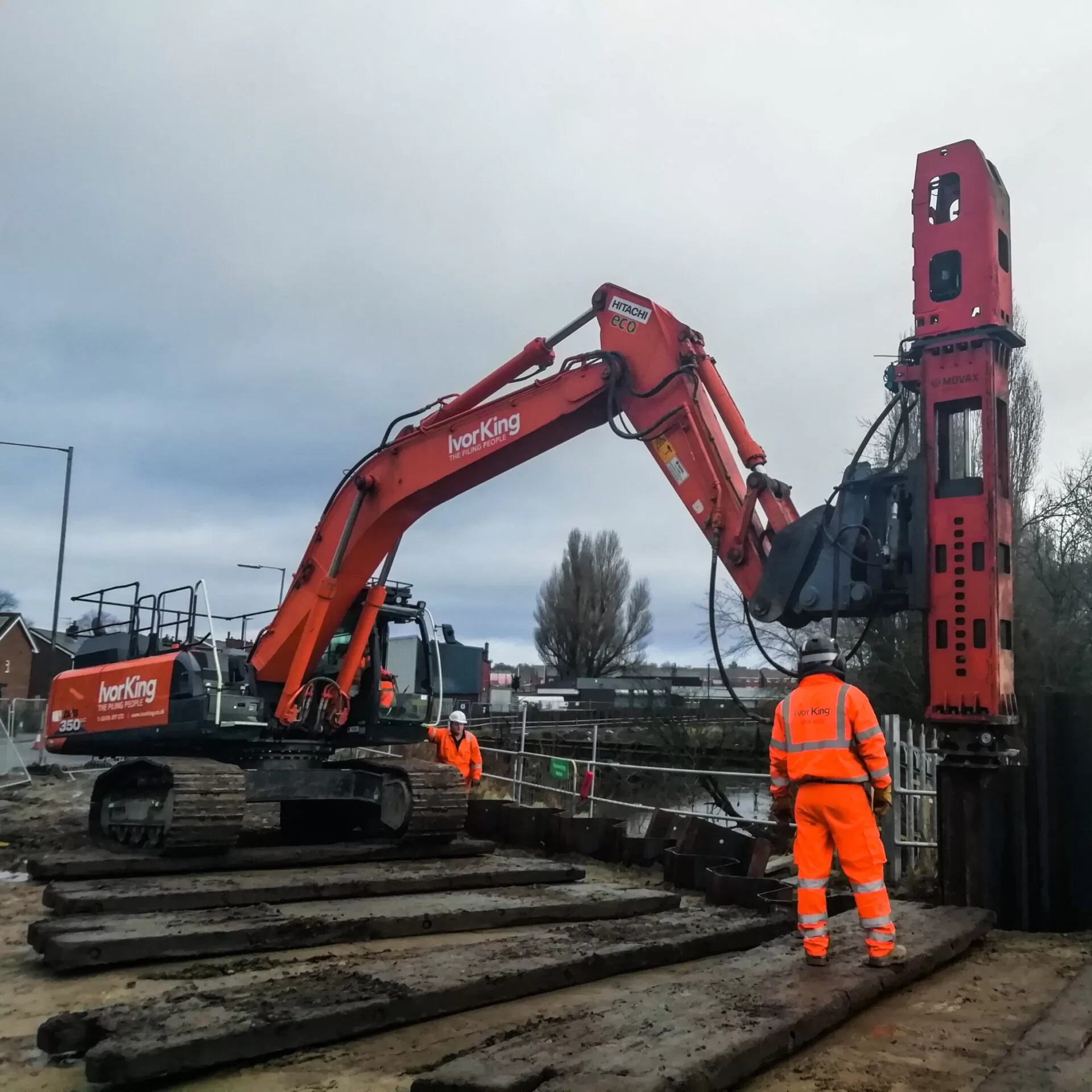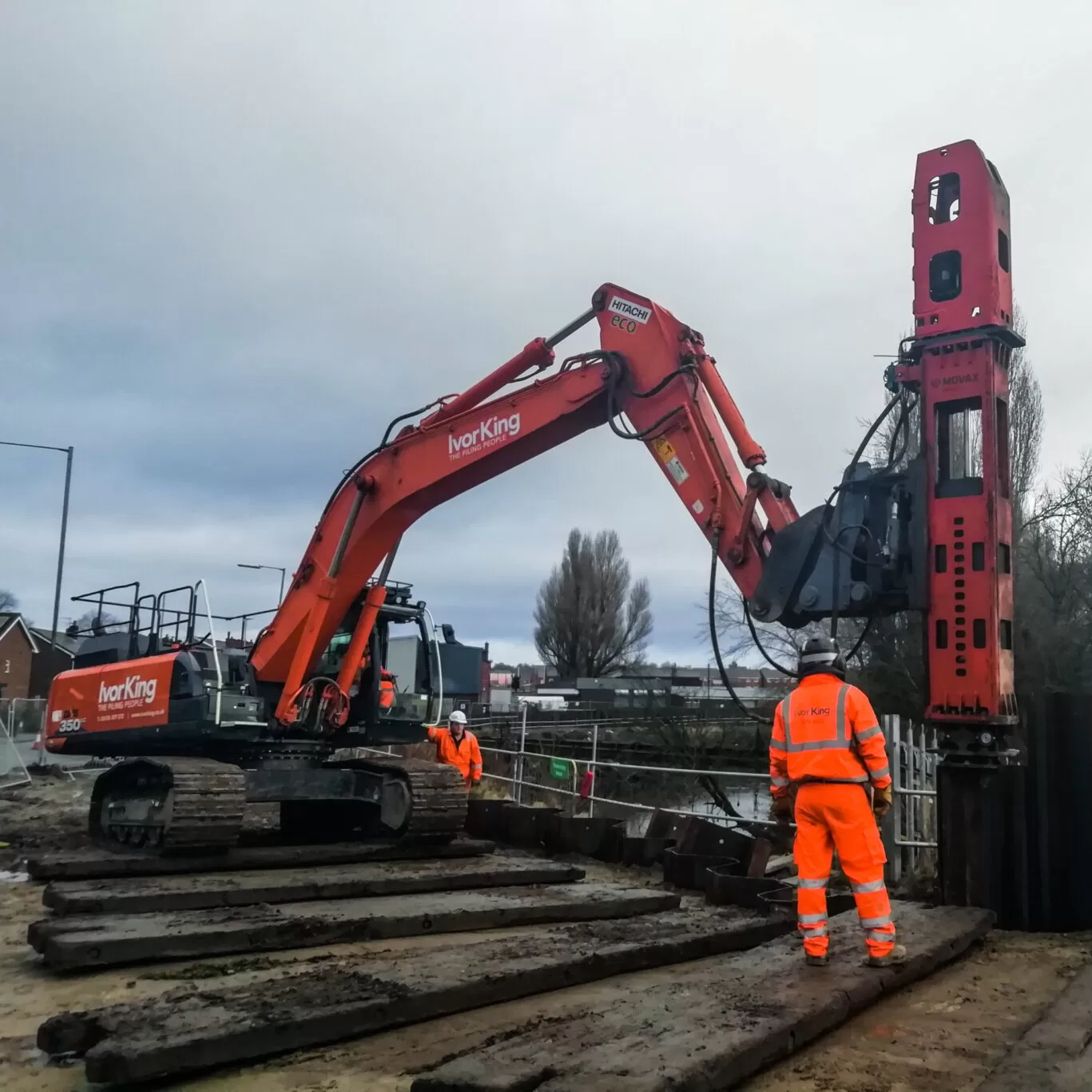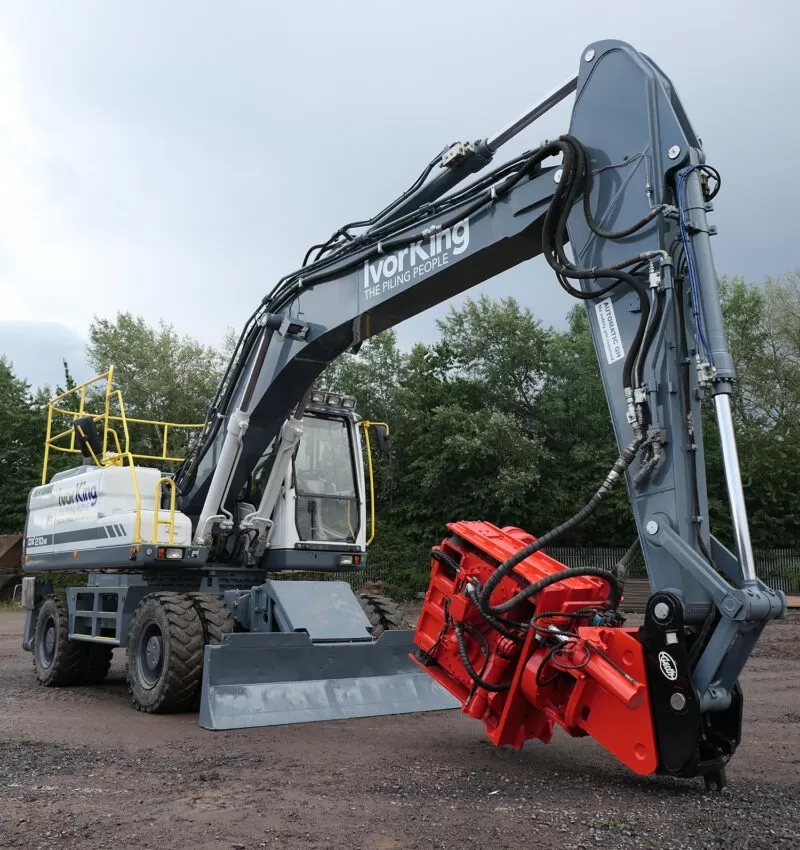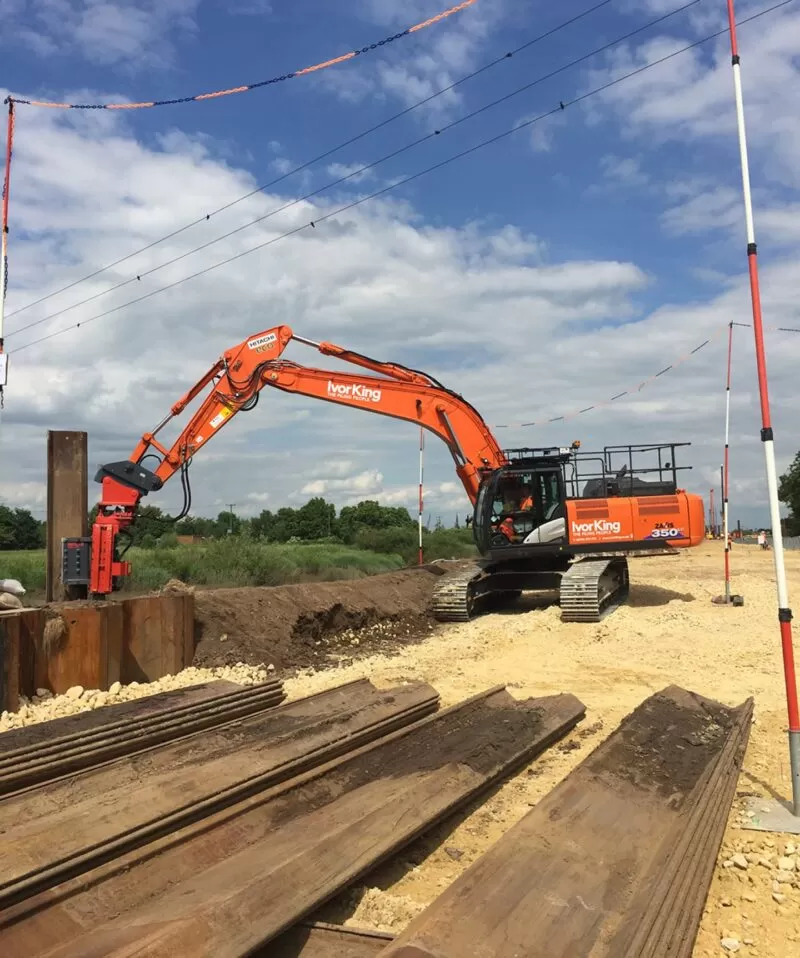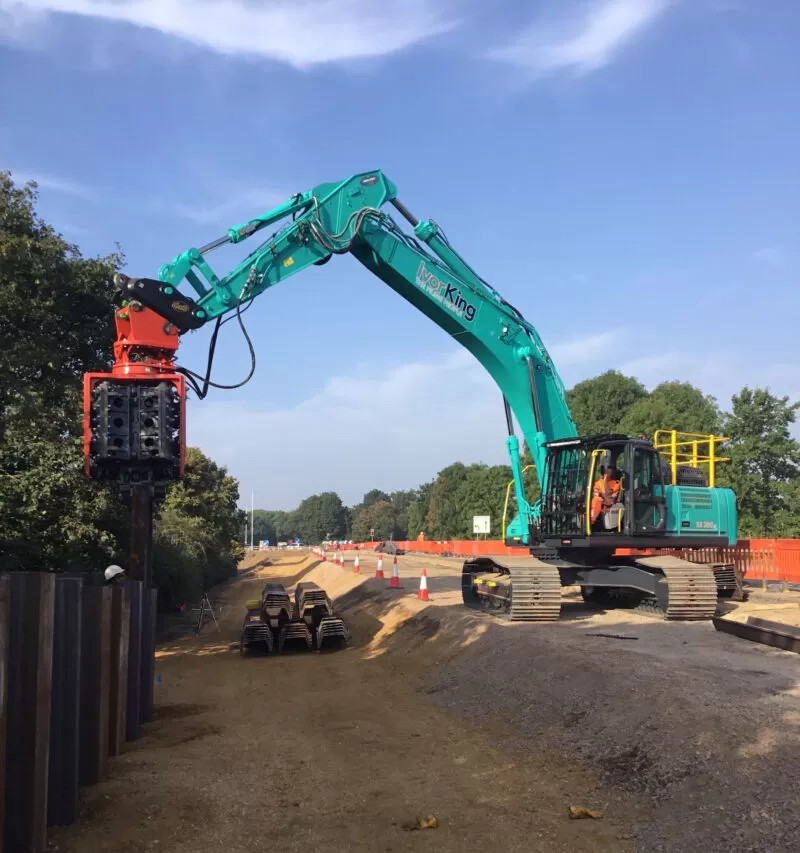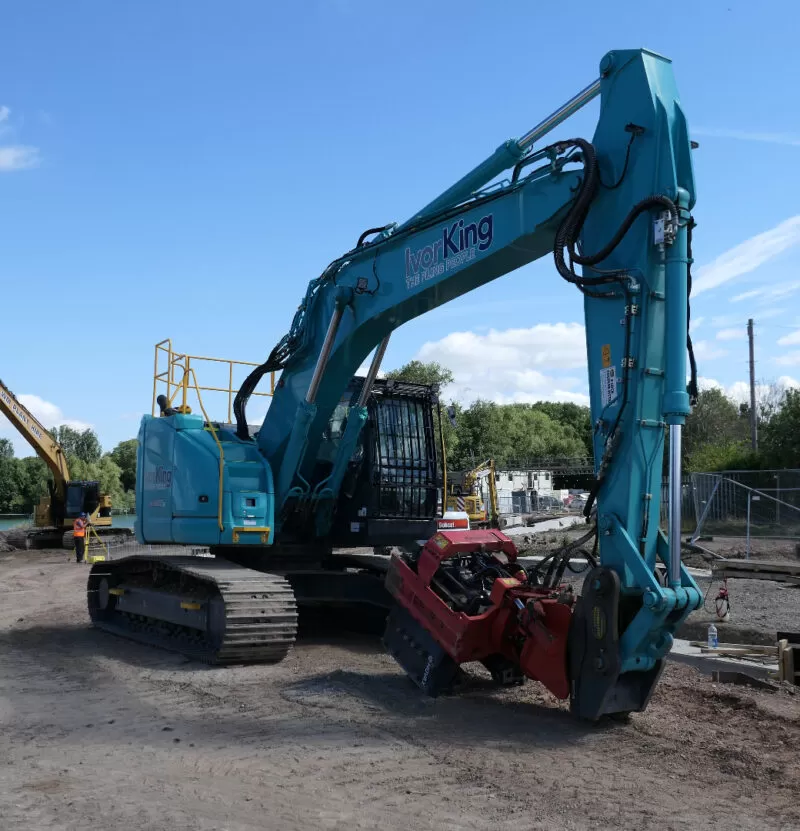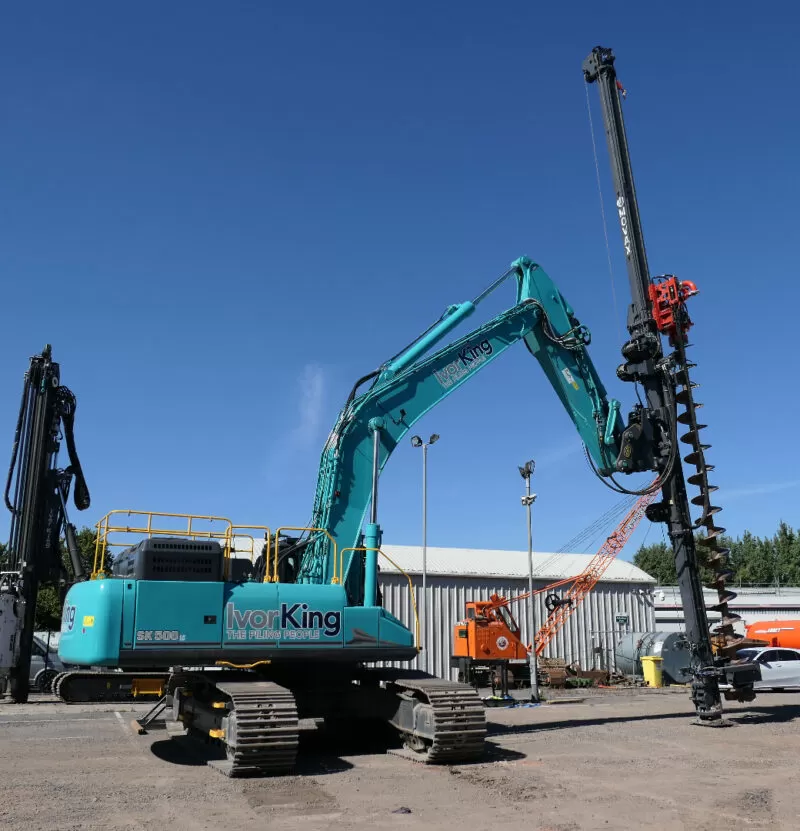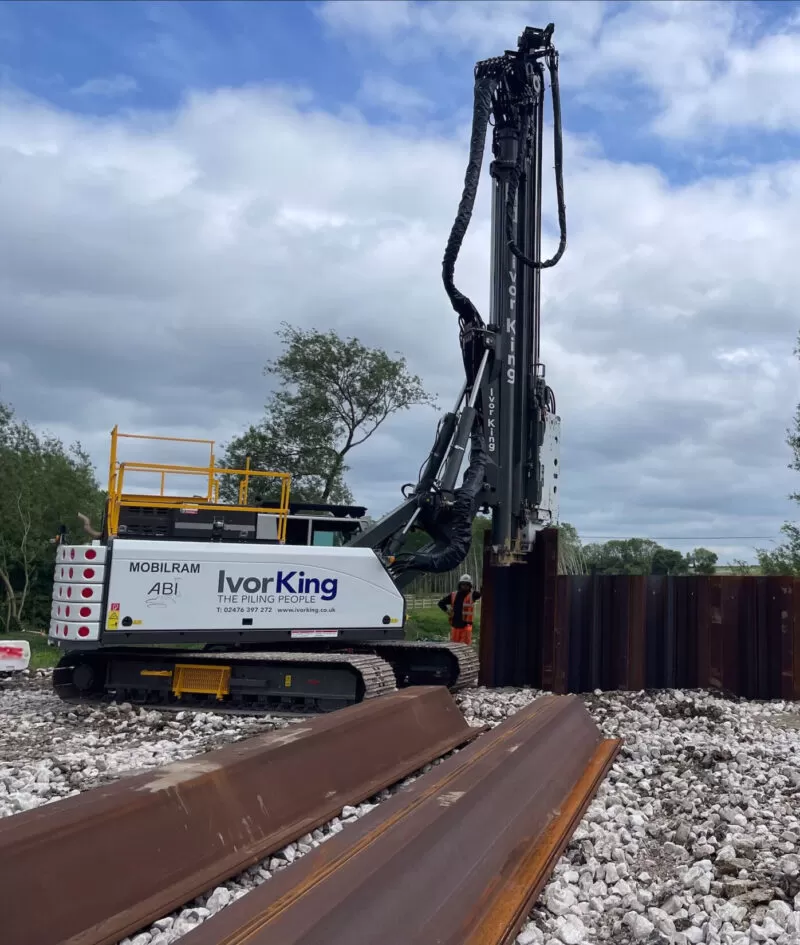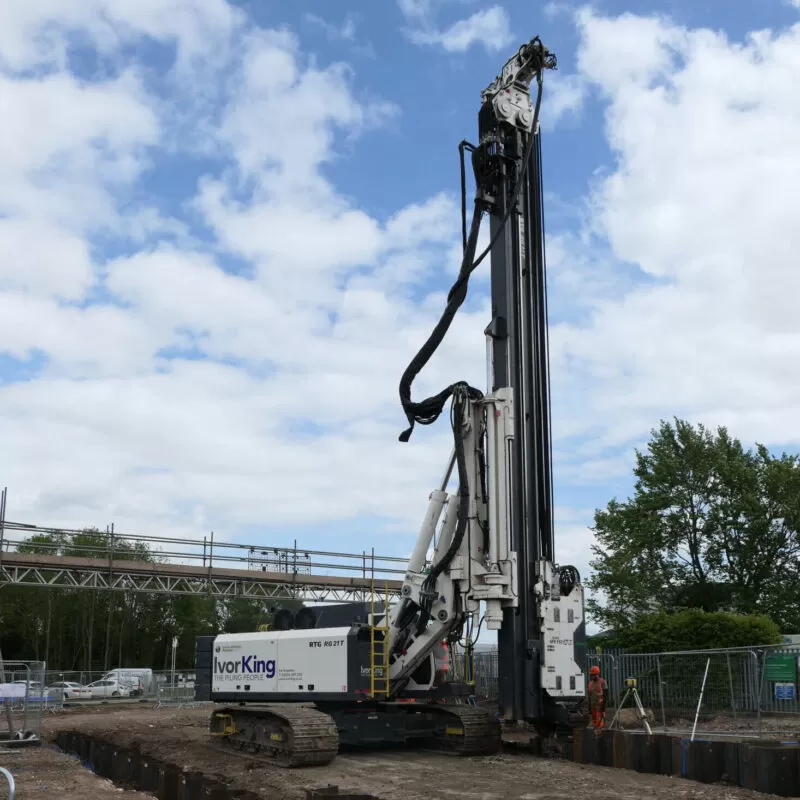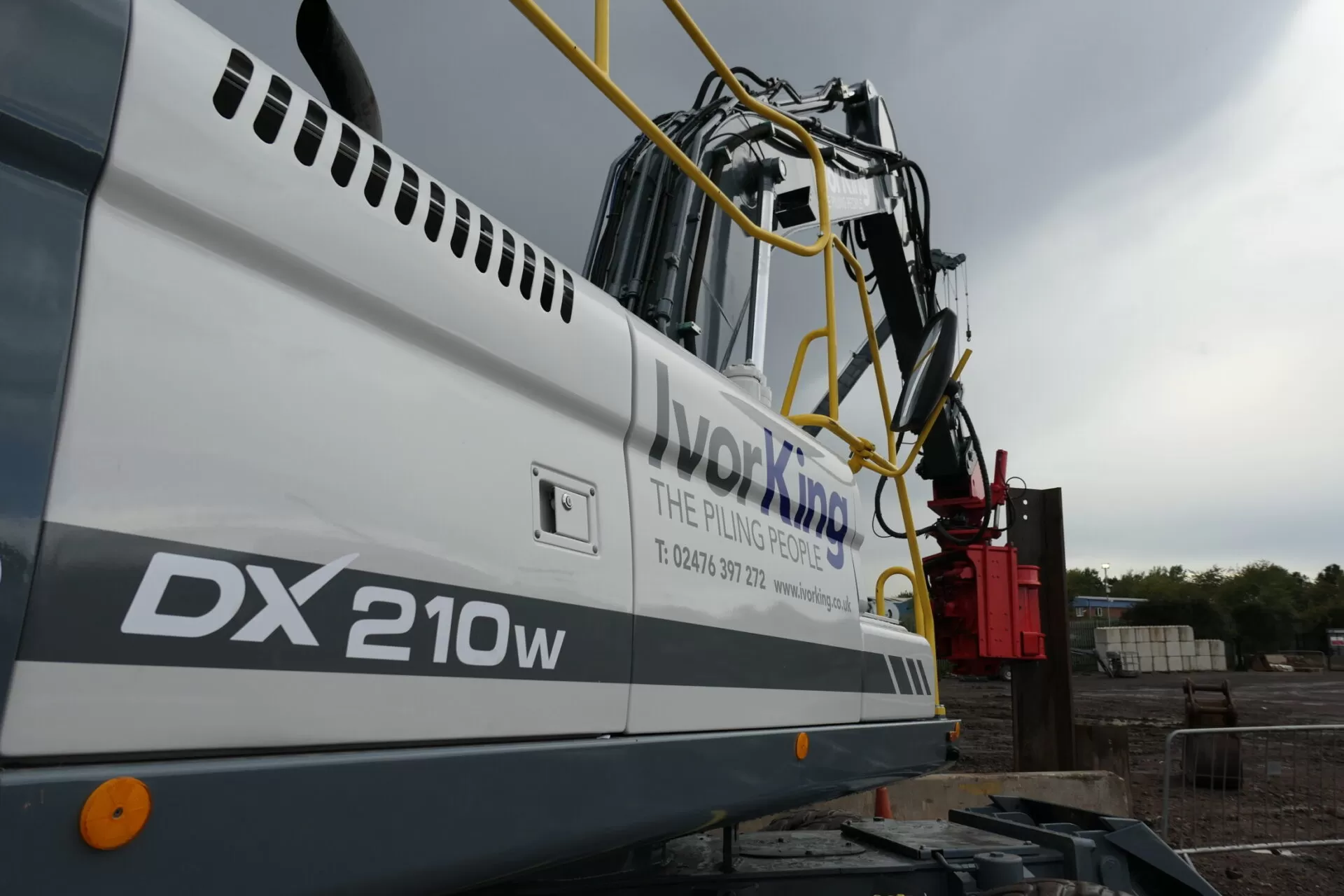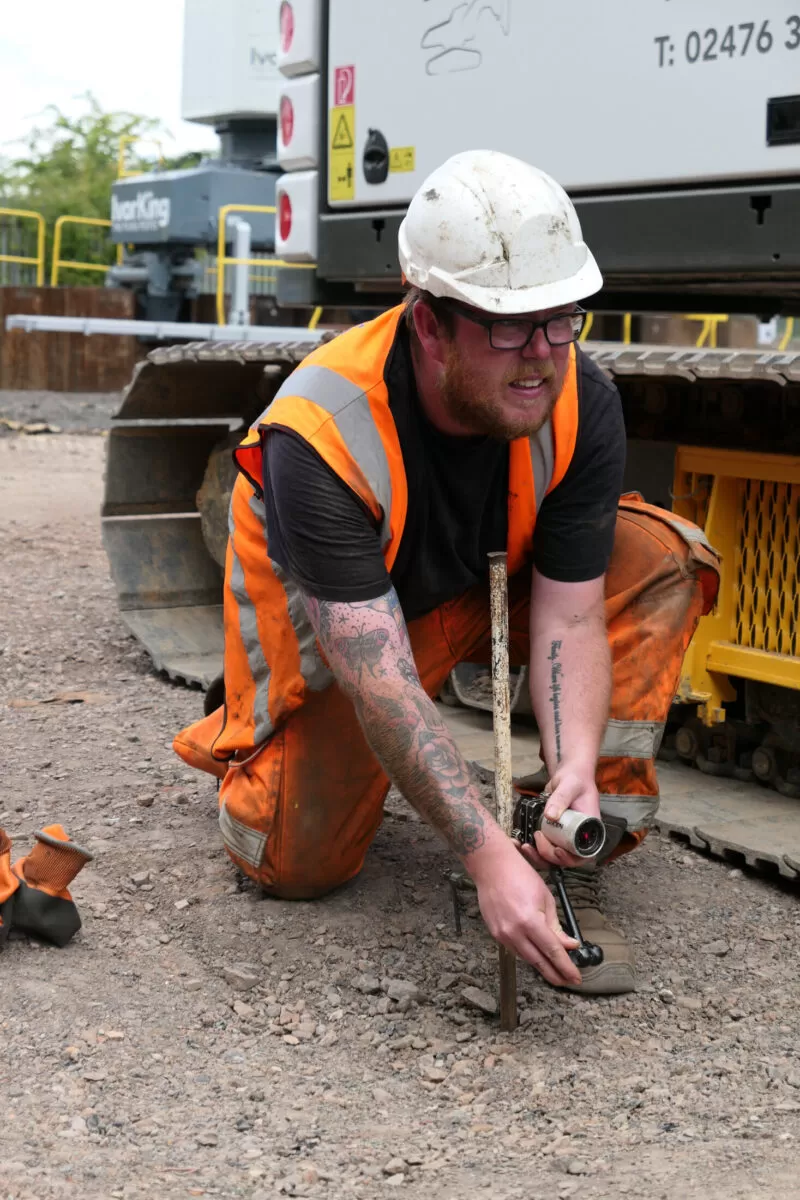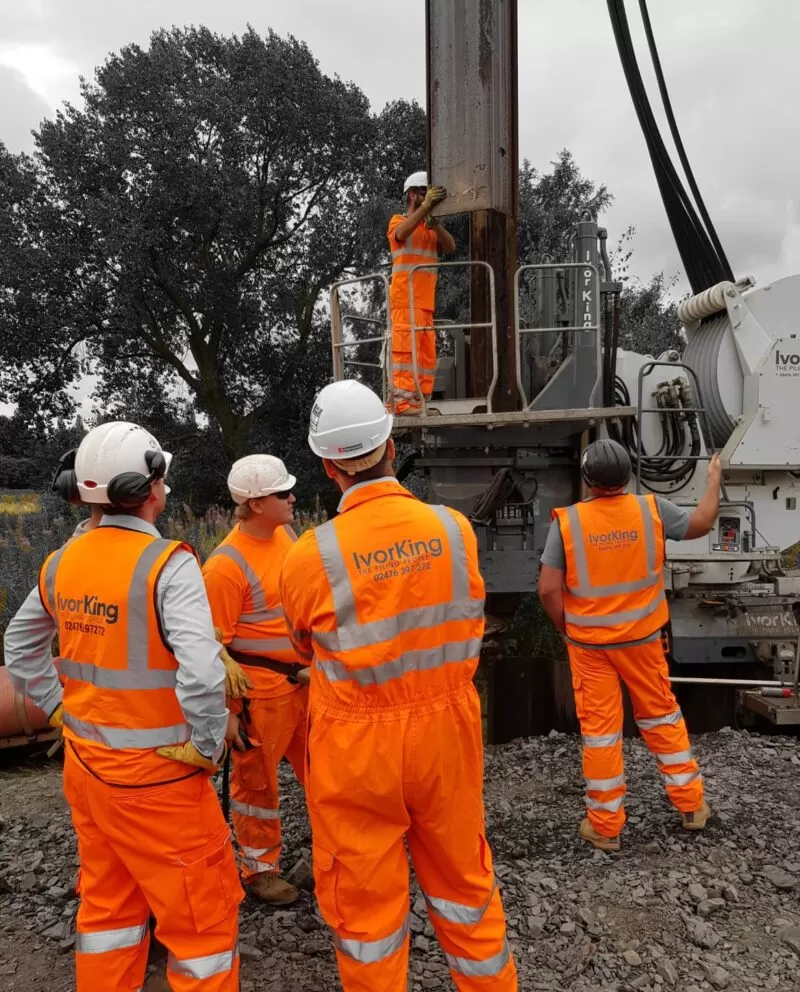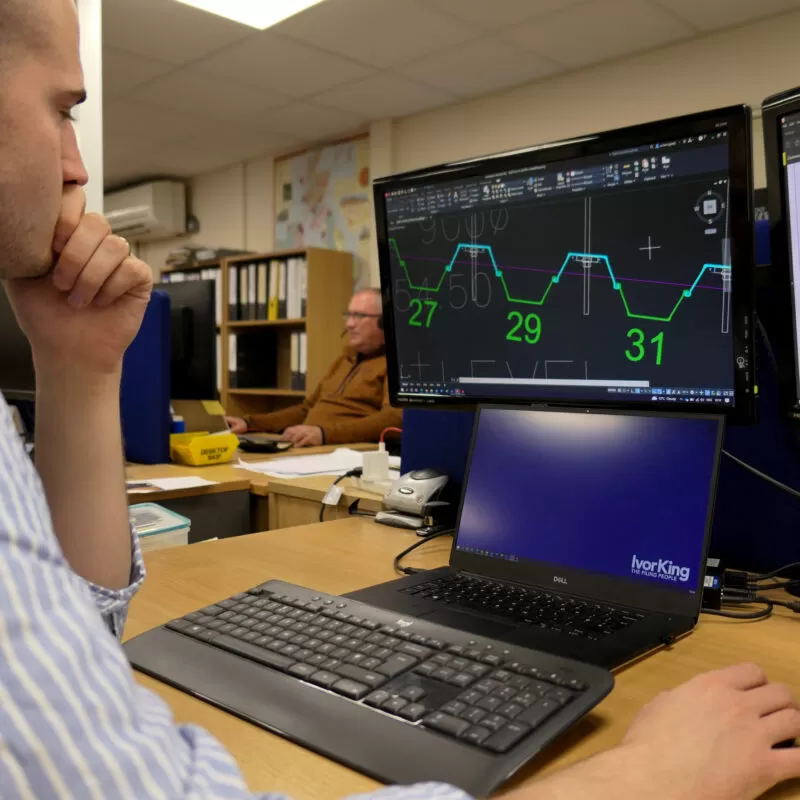Impact Driving Solutions
This is an excellent method for driving sheet piles into difficult ground or final driving of piles to level in panel form. With the correctly selected and sized hammer, it is the most cost effective solution for completing pile penetration into hard soils.
We can provide suitable Impact Hammer attachments which can fit to the same base machines as our Vibratory Hammers. Therefore, the quick change between vibratory and impact hammers ensures efficient and cost-effective site working.
This solution is relatively noisy and generally unsuitable for sensitive or restricted sites. The overall driving time is usually longer than when using a vibratory hammer.
Impact Hammers
Impact Hammers are used to deliver a blow from the ram. We have a range of hydraulic single and double acting hammers that can be used on single piles, or pairs of piles. They are particularly suited for driving U and Z piles in hard ground conditions and to penetrate very dense sands, gravels and, to a certain extent, rock.
Controls, Settings and Efficient Monitoring
Our impact hammers can be operated on different settings to suit varying pile profile and ground conditions. For example, a heavy ram weight ratio hammer on wide piles can be used with a low setting to suit driving into clay, whilst double acting hammers on a rapid blow setting can be used to drive single piles into dense sandy soils. Our impact hammers can also be fitted with digital recording devices to help monitor the sheet pile installation.
Vibration Monitoring
Where the method of piling installation causes vibration, monitoring of vibration levels to adjacent properties may be necessary, operating within the guidance set out in BS 5228-2:2009 + A1:2014 and BS 7385-2:1993.
Seismic monitoring allows us to keep within any pre-defined vibration limits, which in turn ensures that peak measurements caused by piling activity are not likely to lead to surrounding building damage. Where readings exceed any pre-defined vibration thresholds, alternative pile installation methods may need to be considered.
Using the monitor’s built-in modem, results can be viewed and captured in real time via a remote desktop computer, or downloaded remotely following piling activity. Conversely, results can be reviewed at site via the machine’s LCD display and downloaded on to a USB device.
